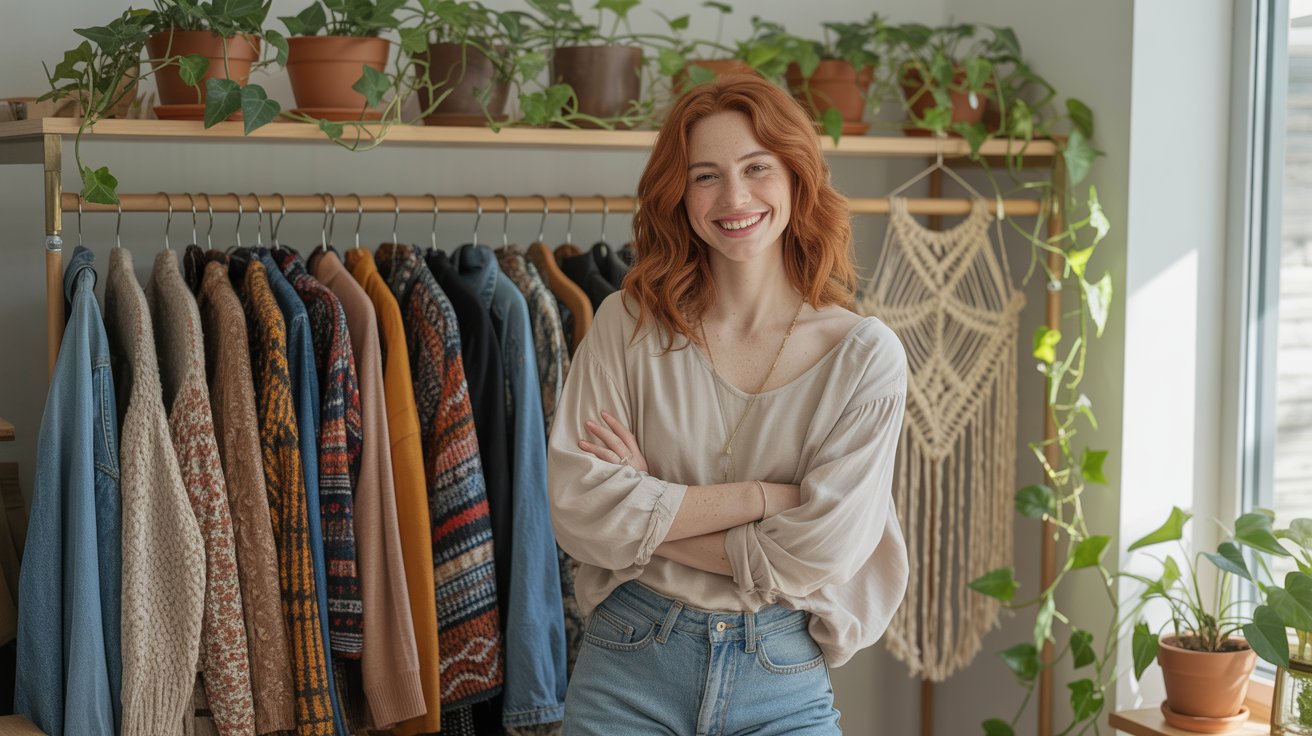Introduction
Fashion isn’t just about what you wear—it’s about who you are and what you stand for. ✨
For a long time, the fashion world moved fast—really fast. New styles dropped every week, clothes were made cheap, and trends changed before you could even say “outfit repeat.” But now, people—especially Gen Z—are rethinking what fashion means. Instead of chasing every new trend, they’re asking, “Who made my clothes? What are they made of? And what happens to them when I’m done wearing them?”
That’s where sustainable and secondhand fashion come in.
These two movements are shaking up the fashion industry in the best way possible. Imagine rocking an outfit that’s stylish, totally unique, and better for the planet. 🌍 From thrift-store treasure hunts and vintage denim finds to clothing swaps and resale apps like Depop, it’s not just a trend—it’s a lifestyle.
What’s even cooler? Wearing secondhand or sustainable fashion doesn’t mean giving up style or self-expression. It’s about being creative, resourceful, and confident in knowing that your wardrobe choices make a difference. You’re not just dressing up—you’re standing up. 💪
In this post, we’ll explore what secondhand fashion really means, why sustainability in fashion matters more than ever, and how you can create a wardrobe that’s good for the planet and looks amazing on you.
What Is Secondhand Fashion?
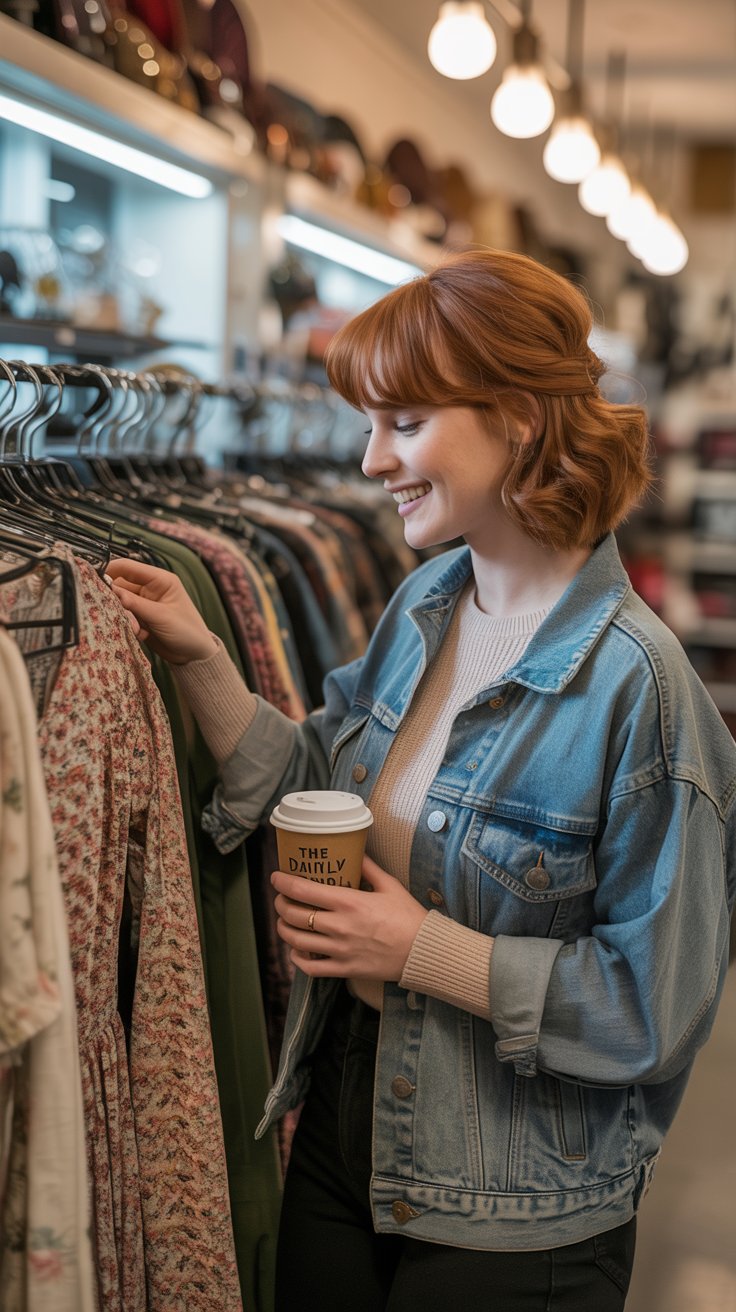
So, what exactly counts as secondhand fashion? In simple terms, it’s clothing that’s had a previous owner—but still has plenty of life (and style!) left. Instead of tossing clothes out, people are giving them a second chance. Think of it as recycling, but way more fun and fashionable.
Secondhand fashion can come from all kinds of places:
-
🛍️ Thrift Stores: These are like treasure chests for fashion lovers. You can find vintage jackets, 90s jeans, and even designer labels for a few dollars.
-
📱 Resale Apps: Platforms like Depop, Poshmark, and Vinted are making thrifting digital. You can buy, sell, or trade your clothes right from your phone.
-
🕰️ Vintage Shops: Perfect for those one-of-a-kind pieces that make your outfit pop. From retro band tees to classic leather bags—these items never go out of style.
-
💞 Clothing Swaps: Get together with friends or community groups to trade pieces you no longer wear. It’s free, fun, and everyone walks away with something “new.”
And don’t forget hand-me-downs—those count too! Your mom’s denim jacket or your sister’s old sweater could easily become your next favorite outfit.
What makes secondhand fashion special is the story. Every piece has a past—maybe someone wore it on their first date, to a concert, or at a big event—and now you’re giving it a brand-new chapter. It’s creative, sustainable, and totally unique to you.
Secondhand doesn’t mean second-best—it means second life. 🌿
Understanding Sustainable Fashion
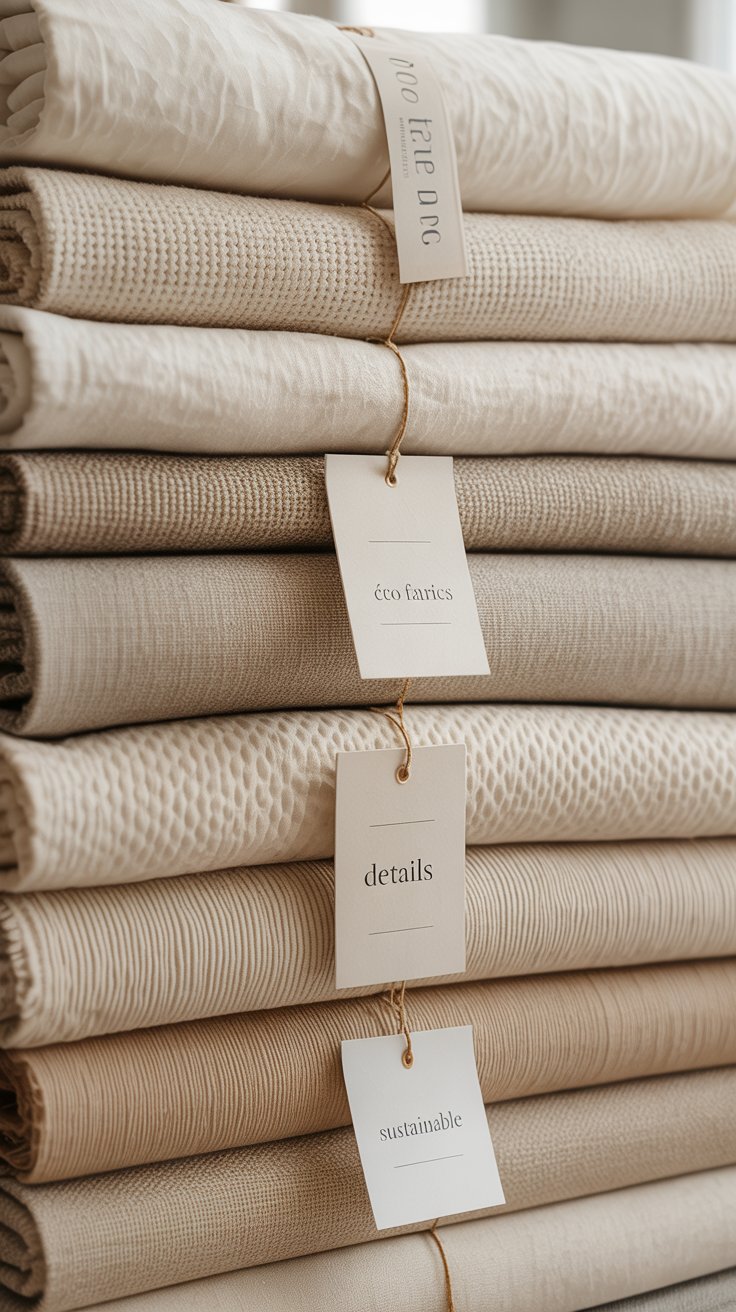
Okay, so we’ve talked about re-wearing and re-loving clothes—but what about how those clothes are made in the first place? That’s where sustainable fashion comes in. 🌎✨
Sustainable fashion is all about creating and buying clothes in a way that’s kind—to people, to animals, and to the planet. Instead of producing tons of cheap clothing that wears out fast, sustainable fashion focuses on quality, fairness, and reducing waste.
Here’s what that actually means:
👚 Eco-Friendly Materials
These are fabrics that come from natural or recycled sources. Think organic cotton that doesn’t use harsh chemicals, bamboo that grows super fast, or recycled polyester made from plastic bottles. The goal? Less pollution and less trash ending up in landfills or oceans.
🧵 Ethical Labor Practices
Fast fashion often relies on unfair working conditions and low wages. Sustainable brands work to change that by paying fair wages and making sure people have safe places to work. When you buy from an ethical brand, you’re helping someone across the world live a better life. 💪
🔁 Longevity Over Quantity
Ever bought a shirt that started falling apart after one wash? Sustainable fashion aims for the opposite—clothes that last. It’s about buying fewer things that you’ll love and wear for years instead of impulse-buying piles of cheap tees.
♻️ Circular Fashion
This means thinking about a garment’s whole life cycle. Some brands take back old clothes to recycle or upcycle them into something new, keeping items in use instead of in the trash. It’s basically fashion with a plan.
💧 Conscious Consumption
Sustainable fashion isn’t only about brands—it’s about us, too. It’s saying, “Do I really need this?” before clicking “add to cart.” It’s mixing, matching, and re-styling what you already own. Even small changes—like air-drying clothes instead of using the dryer—can make a difference.
What’s amazing is that sustainable fashion doesn’t have to mean boring or expensive. Brands like Reformation, Girlfriend Collective, and Patagonia are proof that you can look incredible and do good at the same time. And when you mix sustainable pieces with your secondhand finds? That’s next-level style. 💚
The Rise of Secondhand and Sustainable Fashion
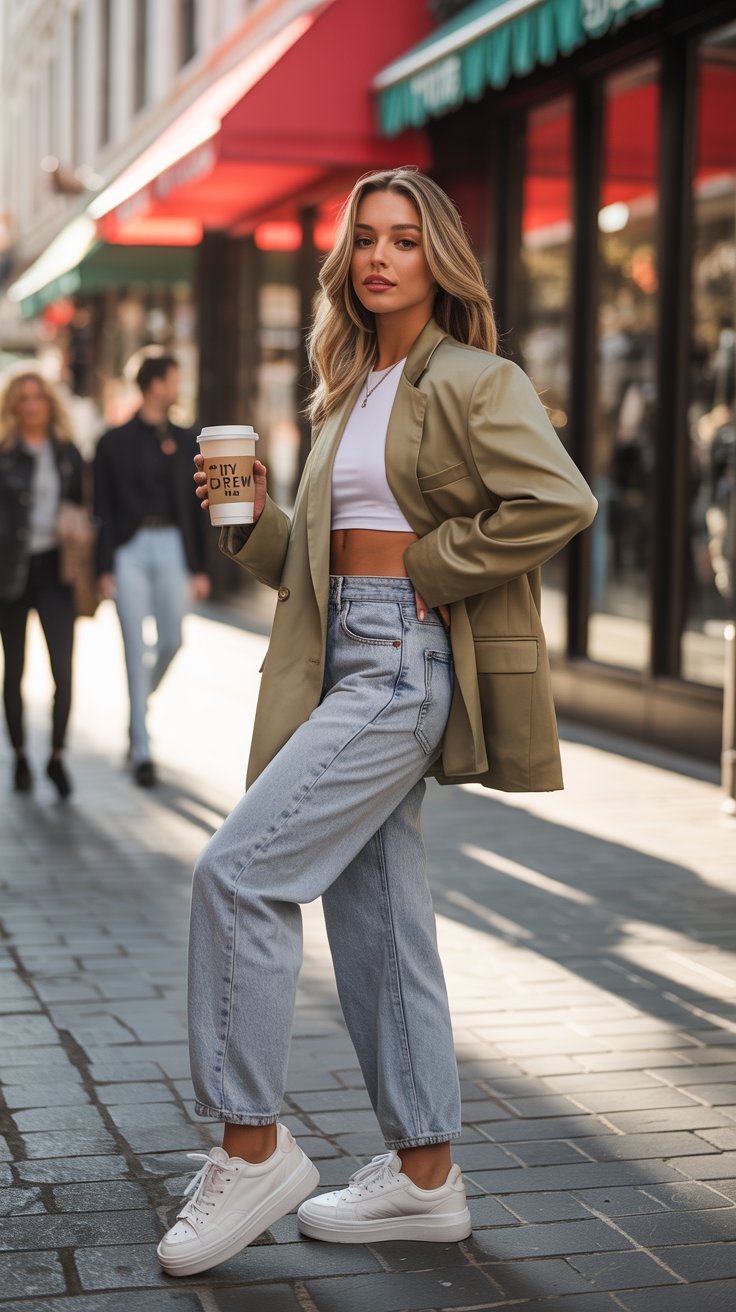
Let’s face it—fashion is changing fast, but not in the fast fashion kind of way. 👀
We’re living in a time when more people, especially Gen Z, are asking big questions about where their clothes come from and where they end up. And the answers? They’re inspiring a total style revolution. 🌿
A few years ago, thrifting was something your grandma did to save money. Now it’s a full-blown trend—and one that’s cooler than ever. On TikTok, the hashtag #ThriftFlip has billions of views, filled with videos of creators transforming old jeans into trendy tops, revamping oversized shirts, and turning thrifted finds into custom one-of-a-kind pieces.
According to a 2025 ThredUp Resale Report, the secondhand clothing market is expected to double in size by 2027, growing faster than traditional retail fashion. That’s huge. And it’s not just about saving cash—it’s about saving the planet.
🌸 Gen Z is leading the charge.
This generation isn’t afraid to mix vintage with new, experiment with styles, and question big brands about their ethics. For many young people, fashion is no longer just self-expression—it’s activism with a side of style.
👠 Influencers are helping shift the spotlight.
Creators like Emma Chamberlain, Hailey Bieber, and Zendaya have all worn vintage or upcycled looks on red carpets and social media. TikTok fashion creators like @bestdressed and @thriftqueen show how thrifting and reworking clothes can be just as chic (and even more original) than buying something new.
🌿 Brands are catching on too.
Major companies are responding to the demand for sustainability by offering recycled collections and buy-back programs. Think Patagonia’s Worn Wear, Levi’s SecondHand, or H&M’s Conscious Collection—all efforts to make style last longer and waste less.
💬 And let’s be honest—secondhand is just more fun.
Finding that perfect thrifted piece feels like a little treasure hunt. You never know what you’ll uncover—a retro leather jacket, a designer dress, or a vintage band tee from the 80s. Every piece feels like yours because it’s unique, not mass-produced.
The best part? This movement isn’t slowing down. Sustainable and secondhand fashion isn’t just a “trend”—it’s becoming the new normal. And it’s proof that being stylish and being kind to the planet can totally go hand in hand. 💚
Benefits of Secondhand and Sustainable Fashion
So why are people so obsessed with thrifting, swapping, and supporting sustainable brands? Because it’s not just good for your wallet—it’s good for the whole world. 🌍💚
Let’s break down the benefits one by one (and spoiler: there are a lot).
🌿 1. It’s Better for the Planet
Every year, millions of tons of clothes end up in landfills. Fast fashion creates huge amounts of waste and pollution—from the water used to grow cotton to the dyes that end up in rivers.
When you shop secondhand or support sustainable brands, you’re helping to:
-
Reduce waste
-
Save water
-
Cut down on pollution and carbon emissions
Think of it this way: buying one used item instead of new can save enough energy to charge your phone hundreds of times. Pretty wild, right? 🔋✨
💸 2. It Saves You Money (and Might Even Make You Some!)
Who doesn’t love a good deal? Thrift stores and resale apps are goldmines for finding high-quality clothes at low prices. You can score designer jeans, leather boots, or vintage bags for a fraction of what they’d cost new.
And here’s a fun twist—you can also sell your own clothes. Apps like Poshmark, Depop, and Vinted make it easy to turn your closet clean-out into extra cash. So you’re helping the planet and your wallet. Win-win! 🙌
🧵 3. You Get Unique, One-of-a-Kind Pieces
Ever show up somewhere and realize three people are wearing the same top? Yeah, not fun. Secondhand fashion fixes that.
When you shop thrift, vintage, or sustainable, your finds are one-of-a-kind. You’ll discover retro prints, old-school band tees, 90s denim, or handmade pieces that no one else has. It’s like building your own personal brand of cool. ✨
🤝 4. You Support Fair Labor and Small Businesses
Many sustainable brands focus on ethical production—meaning fair pay, safe workplaces, and respect for garment workers. By supporting these companies, you’re helping make fashion more human and less harmful.
You’re also lifting up local thrift shops, vintage boutiques, and independent sellers who put their heart into curating what they sell. Every purchase has power. 💪
💫 5. You’re Part of a Bigger Movement
Sustainable and secondhand fashion is more than just style—it’s a statement. It says, “I care about the planet, and I want to make a difference.”
Every time you choose to buy secondhand, upcycle, or support an ethical brand, you’re joining a community of people who believe small choices can add up to big change. 🌎💚
Whether you’re thrifting your next outfit, swapping with friends, or learning about eco-friendly brands, you’re helping shape a future where fashion doesn’t cost the Earth.
How to Incorporate Secondhand and Sustainable Fashion into Your Wardrobe
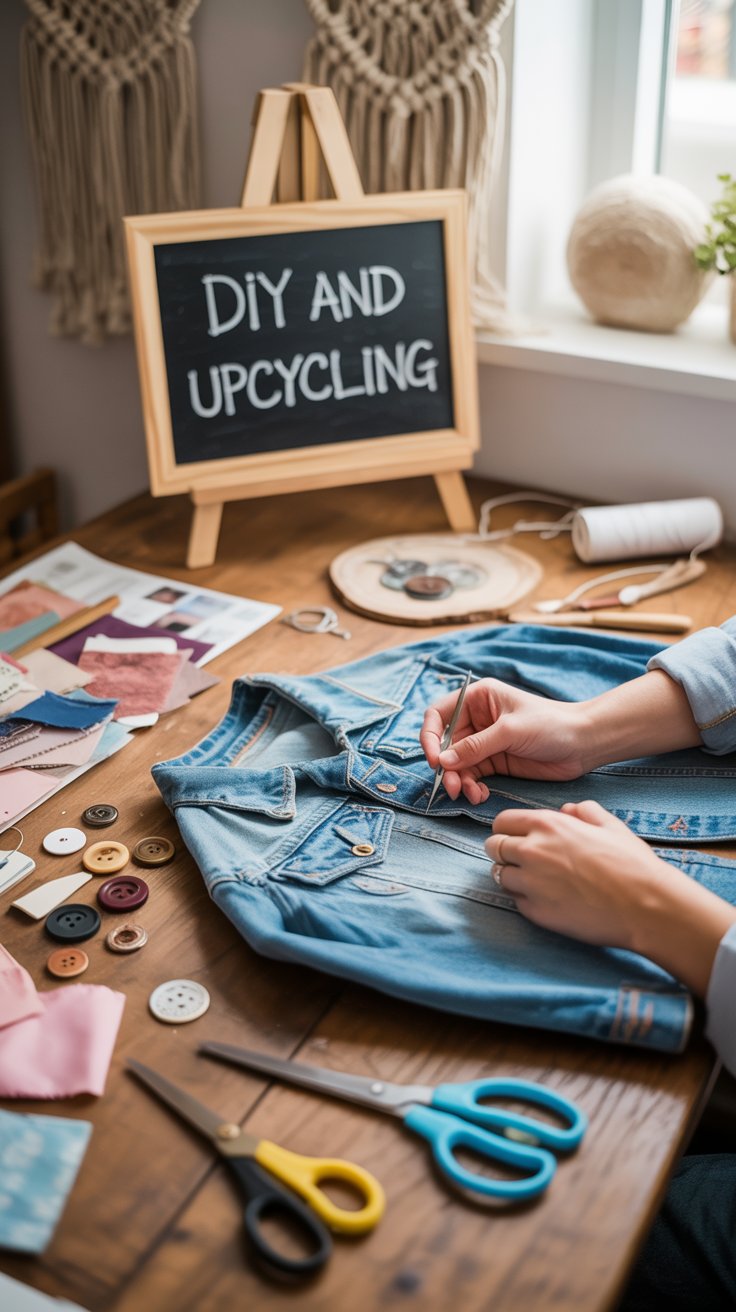
Now that you know what sustainable and secondhand fashion are all about, it’s time to make it part of your life! The best part? You don’t need to throw out everything you own or spend a fortune. You can start small, have fun, and build your dream wardrobe one step at a time. ✨
👗 1. Start with What You Already Have
Before you buy anything new (or new-to-you), take a look inside your closet.
Pull everything out and ask:
-
What do I actually love wearing?
-
What could I restyle or repair?
-
What doesn’t fit my vibe anymore?
You might rediscover pieces you forgot about—or find ways to refresh old ones. Try pairing items differently, layering creatively, or adding accessories. Sometimes all it takes is rolling up your sleeves or knotting a shirt to make it feel brand-new again.
🛍️ 2. Shop Secondhand Like a Pro
Thrifting and resale shopping can feel overwhelming at first—but once you get into it, it’s like a real-life treasure hunt. 🪙
Here’s how to score big:
-
Check local thrift stores regularly—the good stuff moves fast.
-
Go in with a plan: know what you’re looking for (like a denim jacket or neutral basics).
-
Try different sections: men’s and kids’ aisles sometimes hide amazing finds.
-
Inspect before you buy: look for quality stitching and fabric that lasts.
And if you prefer scrolling to searching, check apps like Depop, Poshmark, or ThredUp. You can filter by size, brand, and style to make shopping easier than ever.
♻️ 3. Explore Sustainable Brands
If you want to buy new, make it count. Look for brands that are open about their materials and labor practices. A few favorites include:
-
Patagonia – known for repairing and reusing gear
-
Reformation – stylish, feminine pieces made sustainably
-
Girlfriend Collective – activewear made from recycled materials
-
Everlane – transparent about pricing and production
Pro tip: check for certifications like Fair Trade, GOTS, or B Corp. These mean the brand is walking the talk. 🌱
🧵 4. Try DIY and Upcycling
Before you toss an old shirt or pair of jeans, ask yourself—could I make this better?
-
Turn worn-out jeans into cute cutoff shorts
-
Add patches or embroidery for a custom touch
-
Crop, tie-dye, or paint your old tees
-
Transform old fabric scraps into headbands or tote bags
Pinterest and TikTok are full of easy tutorials for upcycling ideas, and it’s an amazing way to express your creativity while saving clothes from the trash.
💞 5. Swap and Share
Fashion doesn’t have to be a solo adventure! Organize a clothing swap with your friends or family. Everyone brings a few items they no longer wear, and you trade pieces instead of buying new ones.
It’s free, fun, and you’ll walk away with a whole new look—plus some great memories. 🎉
🌸 6. Care for Your Clothes
Sustainability isn’t just about buying better—it’s about keeping clothes longer.
-
Wash in cold water and air dry when possible.
-
Learn basic mending—sewing on a button can save a shirt.
-
Store clothes properly so they don’t lose shape.
Small habits like these make your wardrobe last longer and reduce waste big time.
Building a sustainable wardrobe is a journey, not a sprint. Every time you thrift instead of buy fast fashion, upcycle something old, or choose an ethical brand, you’re making a difference.
Challenges and Misconceptions
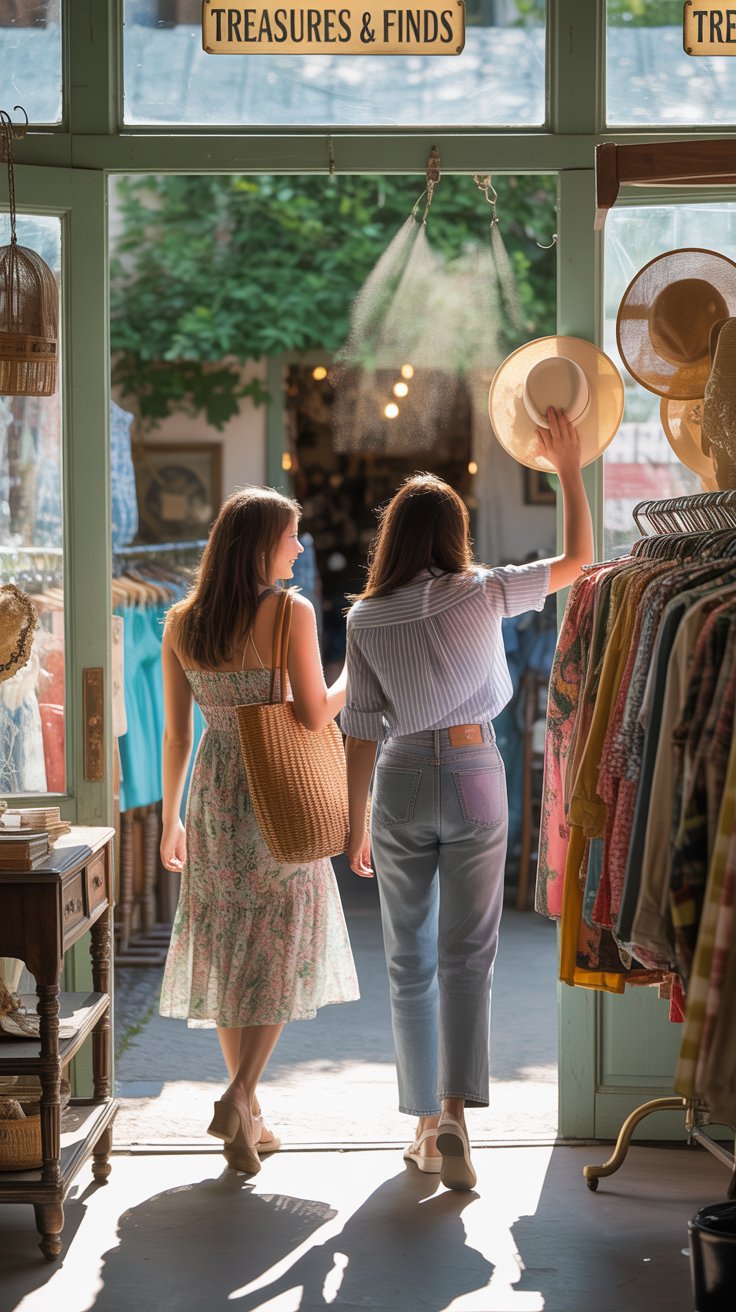
Okay, let’s be real for a sec — sustainable and secondhand fashion isn’t always easy. Sometimes people think it’s too expensive, too hard to find, or that thrift stores only have outdated stuff. But the truth? Most of these are just myths waiting to be busted. 💥
Let’s go over a few common challenges (and how to totally handle them):
🧺 “Thrifting Takes Too Much Time.”
Yes, it’s true — thrifting can take patience. You might dig through a few racks before finding that perfect vintage jacket or pair of jeans. But that’s half the fun! Think of it like a treasure hunt — you never know what gem you’ll uncover.
Pro tip: Go thrifting with a friend, make a day of it, and grab coffee after. You’ll have fun and probably find something one-of-a-kind. ☕👖
💸 “Sustainable Fashion Is Too Expensive.”
Some eco-friendly brands do cost more upfront — but there’s a reason. They pay fair wages, use better materials, and create pieces that actually last.
Plus, you don’t have to buy a whole new sustainable wardrobe overnight. Start small. Buy one quality item that you’ll wear a ton, or mix in secondhand finds. Over time, you’ll actually spend less because you’re buying smarter. 💚
👚 “Thrift Stores Only Have Old or Worn-Out Clothes.”
So not true! Many thrifted pieces are in amazing condition — some even still have tags on. You can find trendy, stylish, and name-brand items if you know where to look.
Try checking resale apps too — they let you filter for your size, favorite brands, or “new with tags.” You’ll be surprised at how much high-quality fashion ends up secondhand.
🧵 “Sustainable Fashion Isn’t My Style.”
Here’s the thing: sustainable fashion isn’t a look, it’s a mindset. Whether you love streetwear, cottagecore, Y2K, or minimalism, there are secondhand and sustainable options for every style.
You get to define what sustainable fashion looks like for you. Maybe that’s a thrifted graphic tee with vintage sneakers, or a Reformation dress paired with your favorite hand-me-down cardigan. 🌼
🌱 “One Person Can’t Make a Difference.”
This might be the biggest myth of all — and it’s totally false. Every small choice adds up. One thrifted item means one less new item produced. One mindful purchase helps one ethical brand grow.
When thousands (or millions!) of people make those same small choices, the impact is huge. Together, we can change the way the fashion industry works — one outfit at a time. ✨
Remember, sustainable fashion isn’t about being perfect. It’s about being aware. Some days you’ll shop secondhand, other days you might not. That’s okay! What matters is making small, thoughtful choices that move you toward a better future for people and the planet. 🌍💞
Conclusion
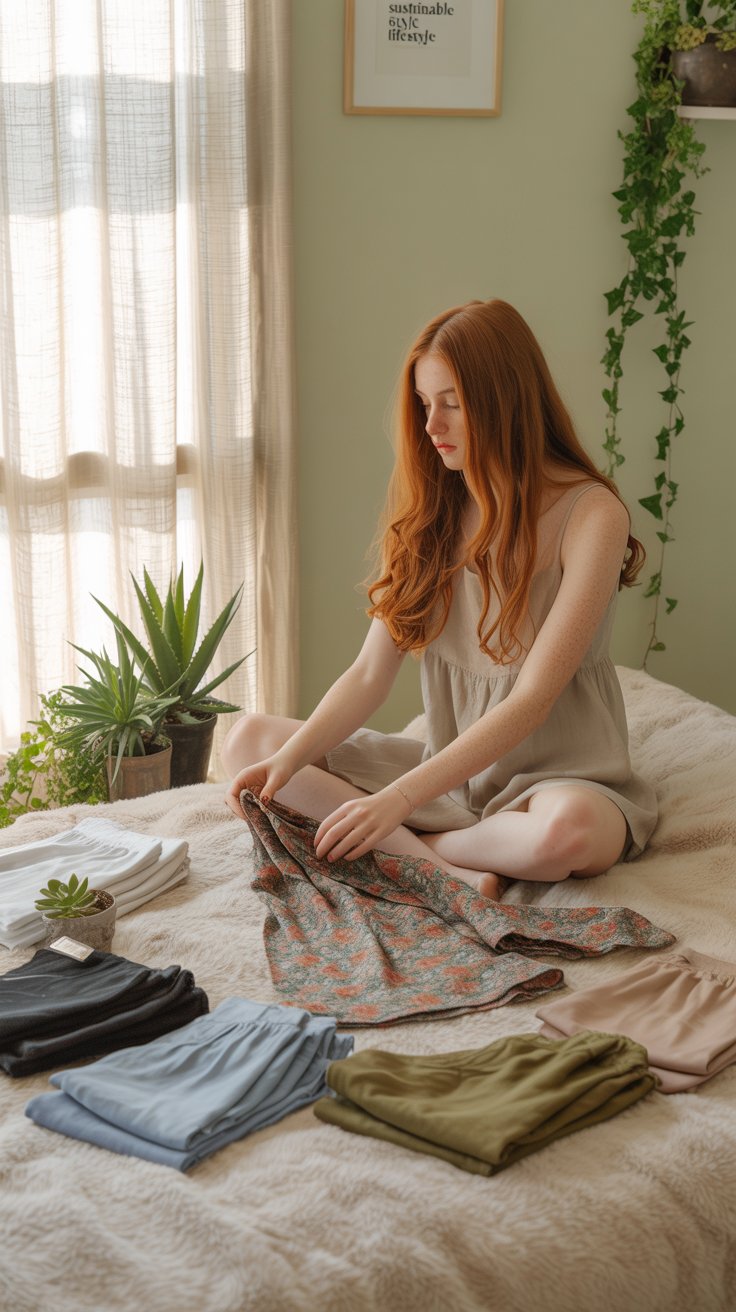
At the end of the day, sustainable and secondhand fashion isn’t just a trend — it’s a lifestyle that’s changing the world, one outfit at a time. 💚
When you choose to thrift, swap, or support an ethical brand, you’re doing so much more than dressing yourself — you’re making a statement that style doesn’t have to come at the planet’s expense. You’re showing that fashion with purpose can still be fun, affordable, and totally you.
Remember: it’s not about being perfect. You don’t have to replace everything you own or spend hundreds on eco-brands. The goal is progress, not perfection. Maybe it starts with one thrifted jacket, one upcycled pair of jeans, or one decision to buy from a sustainable brand. Those little choices matter — and they add up fast.
So next time you’re getting dressed, take a second to appreciate your outfit. Whether it’s thrifted, handmade, or simply loved for years — you’re part of something bigger. 🌎✨
Additional Resources
Here are some great places to learn more, shop smarter, and find daily inspiration:
🌿 Websites & Tools:
-
Good On You — Find ethical brand ratings and sustainability tips
-
Remake — A movement promoting fair fashion for all
-
Fashion Revolution — Discover who makes your clothes
📱 Resale Apps:
-
Depop, Vinted, Poshmark, ThredUp — Easy ways to buy and sell secondhand fashion
Disclosure
This blog post may contain affiliate links, which means I may earn a small commission at no extra cost to you if you make a purchase through those links. As an Amazon Associate and participant in other affiliate programs, I earn from qualifying purchases. I only share products or brands I truly love and believe in. 💕
Additionally, parts of this post may have been created with the assistance of AI tools to enhance readability, grammar, and flow — but all content, opinions, and style are 100% my own.

